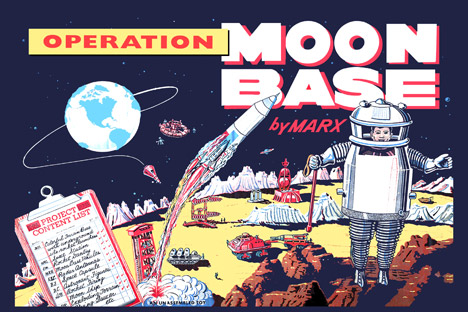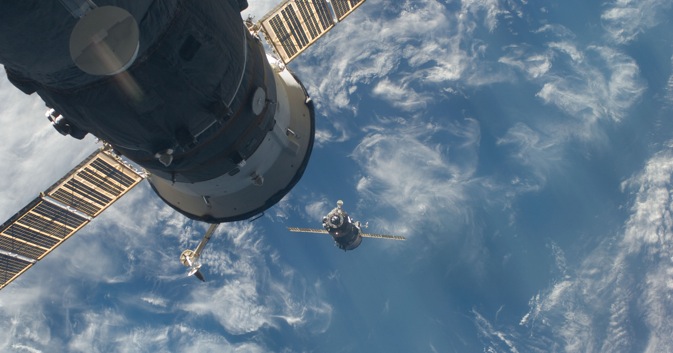Russia’s seven most ambitious space projects

Roscosmos is quite serious about moon exploration. Source: Alamy / Legion Media
1. Liquidator: The space janitor
Humans have not conquered space yet, but they have already managed to pollute it. According to the US Space Surveillance Network there are more than 16,200 loose objects orbiting the earth, which has the potential to destroy new space vehicles.
There is a chance that the plot of the film Gravity, where two astronauts played by Sandra Bullock and George Clooney are stranded in space after the destruction of their shuttle, could come true.
In August, Roscosmos declared their plans to design a spacecraft for cleaning the geostationary orbit from spent satellites and LV upper stages. The project, called the Liquidator, is slated for development between 2018-2025 with a budget of roughly $292 million.
2. New cosmodromes
Roscosmos plans to spend $24.3 billion for infrastructure to support spaceports. These funds will be used to build an extension of the Plesetsk Cosmodrome as well as to complete the construction of the Vostochny Cosmodrome and to support the Baikonur space complex based in Kazakhstan.
However, Roscosmos may be able to come up with a more financially feasible option. If a dispute with Kazakhstan is resolved by 2020 the agency will be required to spend only $21.6 billion. Using Baikonur, as well as Russian cosmodromes, will free up $2.7 billion for the Vostochny space complex.
3. Remote sensing of the earth
Remote sensing of the earth is one of the Russian space industry’s weakest areas. With no national program in place, Russian scientists have to rely on information from international satellites. But a Federal Space Program (FSP) slated for development between 2016 and 2025 was created by resilient optimists promising to enlarge the orbital fleet by adding 26 hi-tech satellites at a cost of $9.7 billion.
The different projects within the FSP include:
Meteo-SSO, a global hydrometeorological and heliophysical system consisting of four new generation satellites to travel on sun synchronous orbits ($1.8 billion).
Meteo-Glob, a global meteorological sensing system using visible and infrared bands ($2.3 billion).
Resurs, a three-satellite program designed to capture images of the Earth in high and ultra-high resolution ($1.5 billion).
ES-SSO is an operating supervision space system for local emergency situations. It is composed of 10 satellites that orbit in synchronicity with the sun ($2.9 billion).
ES-GSO is a high-operating supervision space system for major emergency situations. It functions on an optical and radar band on a geostationary orbit ($1.2 billion).
4. Moon base
Russian spacecraft were the first to fly over the dark side of the Moon and take soil samples, but the Americans beat them to putting a person on its surface.
Roscosmos is quite serious about moon exploration. The agency is slated to spend $280 million on the development of a moon base, a mobile manipulator crane, a grader, an excavator, a cable layer and a mobile robot for lunar surface exploration between 2018 and 2025. It looks like Roscosmos wants to be a full time resident.
5. Moon-Mobile
A moon base without a moon vehicle is kind of beside the point, thus Roscosmos is developing a new rover that will search for natural resources. The Moon is full of resources, such as rare earth elements, titanium, and uranium, which the Earth does not have in abundant supply. It is also rich in helium-3, which is a possible fuel for nuclear fusion. This moon vehicle is called Moon-Mobile. Development should conclude by 2021, with testing lasting another four years.
6. Super-heavy rocket to Mars
In September 2014, plans for a super-heavy rocket with a 120-150 tonne capacity received preliminary approval by President Vladimir Putin. This rocket is one of the most expensive of Roscosmos’ ideas and its budget is twice as large as the Angara rocket, a popular spacecraft currently in use. The goal of the rocket is to fly it to Mars. NASA has a similar rocket design under construction. The enormous budget undoubtedly makes this project a risky proposal.
7. Spectr-RG for the exploration of black holes
In 2013 the Russian-German high-energy astrophysics observatory Spectr-RG was ready to be launched with the purpose of exploring galactic clusters and black holes with the eROSITA Roentgen telescope.
While the idea has been in existence since the late 1980s, the project was only restarted in 2005, requiring $135 million. The project was put on hold several times because of delays from the German telescope developers. The observatory should be ready by 2017.
All rights reserved by Rossiyskaya Gazeta.
Subscribe
to our newsletter!
Get the week's best stories straight to your inbox

